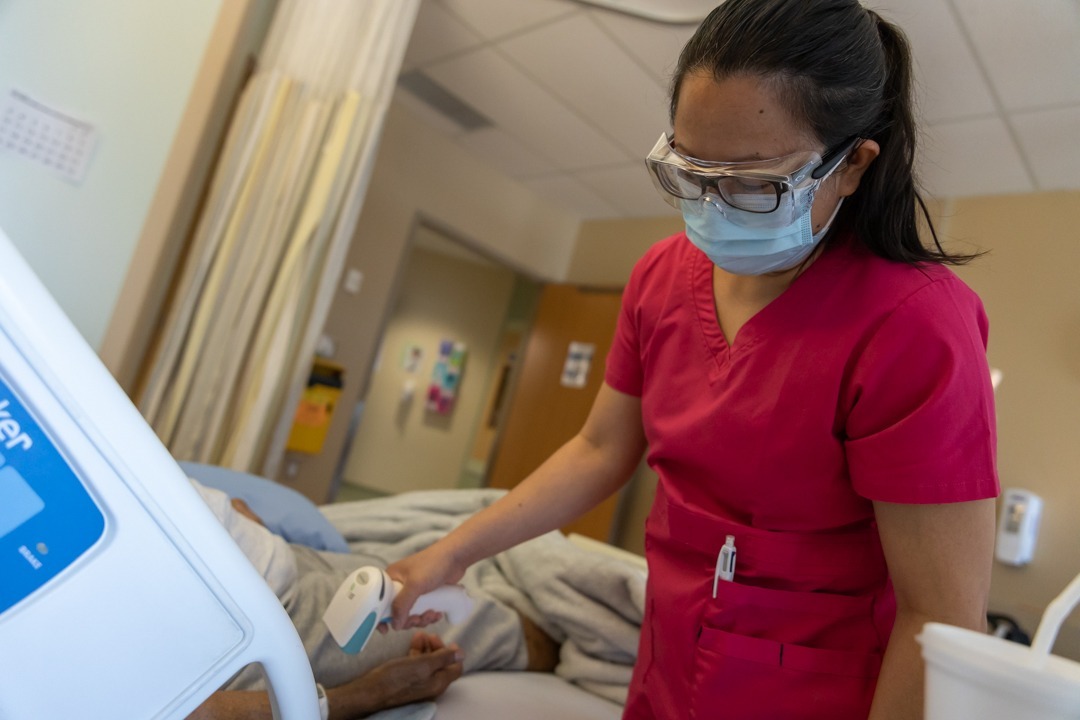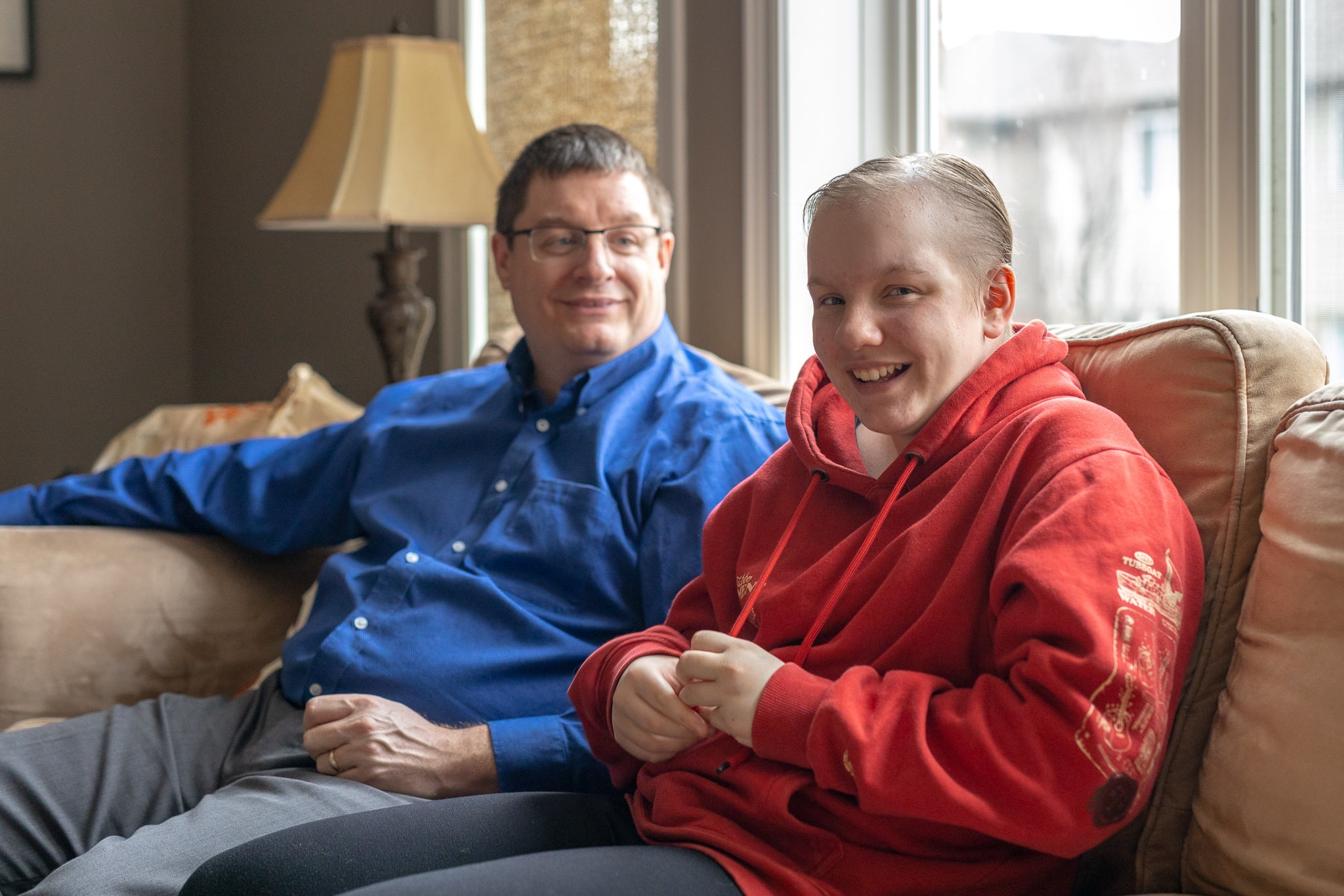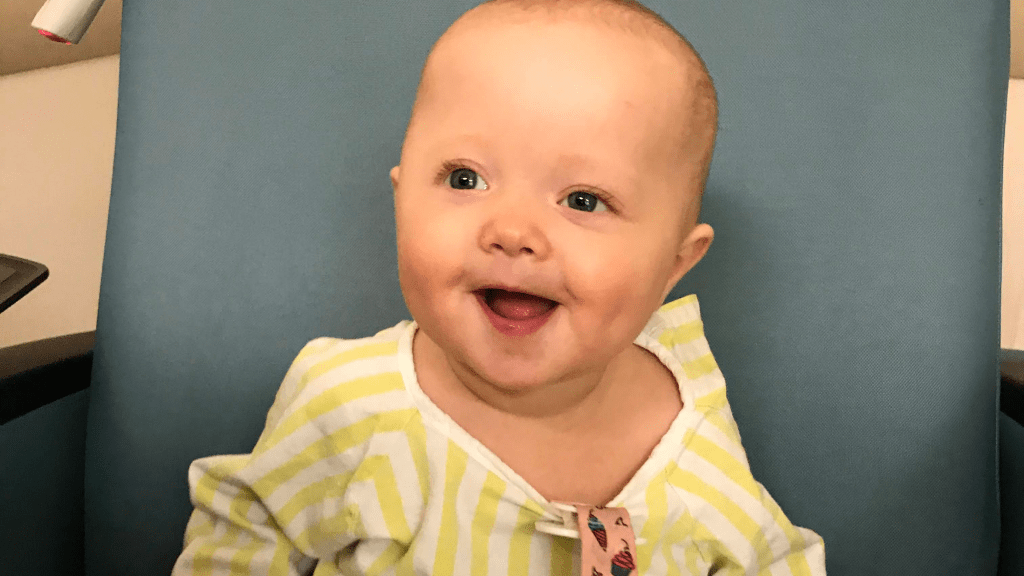
Real-time updates from HHS operating rooms now available through Epic
When Lindsay Janzen’s baby underwent a six-hour surgery earlier this month, the worried mom received text-message updates directly from the operating room to her mobile phone while she waited at Hamilton Health Sciences’ (HHS) McMaster Children’s Hospital (MCH).
“I really appreciated getting real-time updates through texts.” — Lindsay Janzen, mom
This service, called Visit Messaging, is now available to all patients through HHS’ new hospital information system, called Epic, which launched on June 4. Messages can also be sent by email.
Opting for Visit Messaging
“I really appreciated getting real-time updates through texts,” says Janzen, of Niagara, whose eight-month-old daughter McKinley is now recovering well at home after undergoing cranial vault reconstruction surgery.
“The Visit Messaging service is better for families and it’s certainly is a time saver from a nursing perspective.” — Dr. Blake Yarascavitch, pediatric neurosurgeon
McKinley was born with craniosynostosis – a condition where the bones in a baby’s skull join together too early, before the brain is fully formed. Surgery allows for continued brain growth and corrects the shape of the head. Without treatment, the build-up of pressure in a baby’s skull can lead to problems including deformity, seizures, blindness and brain damage.
“Knowing that McKinley was going to be put under anesthesia and have a breathing tube and surgery was extremely worrying,” says Janzen. “As a parent, you’re scared and thinking about the worst-case scenario. That’s why it’s so helpful to receive updates directly from the operating room.”
To ensure a strong signal, Janzen used the hospital’s Wi-Fi.
Peace of mind
Janzen, her husband and two other family members were at the hospital for the surgery, with one family member in the waiting room at all times. But with Visit Messaging, Janzen and her husband felt comfortable leaving for short breaks, like visiting the cafeteria or restroom, because updates were being sent directly to her phone. They didn’t worry about missing an update via the waiting room phone or a nurse coming to the waiting room in person.
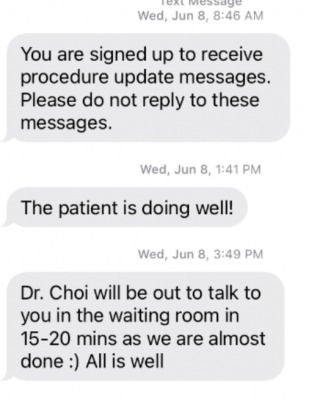
With Hamilton Health Sciences’ new Epic hospital information system, Lindsay Janzen received updates on her baby’s six-hour surgery directly from the operating room.
Janzen received three text messages over the six hours. The first confirmed she had signed up for text message updates, the second let her know that McKinley was doing well and the third gave her the heads-up that one of the surgeons would be out to speak with them in person, in 15 to 20 minutes, once the surgery was complete.
“We didn’t have to worry about missing an opportunity to talk in-person to a member of the surgical team,” says Janzen.
Messaging is one-way, so Janzen didn’t have the option of replying. “Otherwise, I think I would have been texting them for updates every five minutes. But the one-way communication makes sense because they’re in the middle of surgery and can’t be interrupted.”
Streamlined communications
Pediatric neurosurgeon Dr. Blake Yarascavitch and plastic surgeon Dr. Matthew Choi performed the surgery, and this was their first time using Epic’s Visit Messaging in the operating room.

Dr. Blake Yarascavitch, pediatric neurosurgeon
Providing updates to families isn’t new, says Yarascavitch. “But with Visit Messaging it’s much faster, more efficient and a lot more streamlined.”
Prior to Epic’s launch, a nurse either tracked down family members in person during the surgery, or tried calling them on the waiting room phone or their personal cell phone. Those pathways were more time consuming than sending a text, especially if phone signals were weak or family members weren’t in the waiting room when the nurse arrived.
“The Visit Messaging service is better for families and it’s certainly is a time saver from a nursing perspective,” says Yarascavitch.
Surgical patients will be invited to register for Visit Messaging by a member of their health care team.
Michelle Leafloor is HHS’ vice-president of health information and technology services, and chief information officer. “Digital health care is the future of health care, and Hamilton Health Sciences is excited to be among the first hospitals in Canada to implement Epic’s cutting edge and fully electronic system,” she says.
“With Epic, not only will we will be able to do even more to improve the health outcomes of our patients, we will also be able to contribute to research that will be life-changing for countless patients beyond our own community.”
MyChart
Another new feature available to HHS patients is MyChart by Epic.
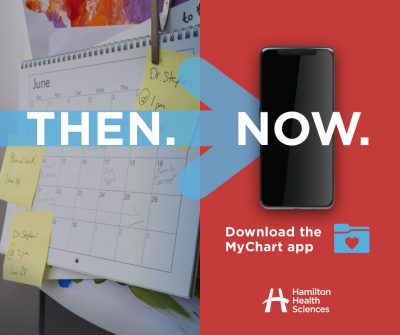
Hamilton Health Sciences patients are encouraged to sign up for MyChart. Visit the MyChart link in this story for more information.
This free, secure, online tool gives patients aged 12 years and older easy access to their HHS health record anytime, from anywhere. Patients can securely view test results, enter personal health information, and attend video visits.
An important MyChart feature is proxy access. Proxy is the authority to represent someone else, such as a parent managing their child’s health record. For example, parents can get proxy access to their baby’s chart or adult children can be proxies on their older parent’s account.
All HHS patients and their proxies are encouraged to sign up for MyChart.

